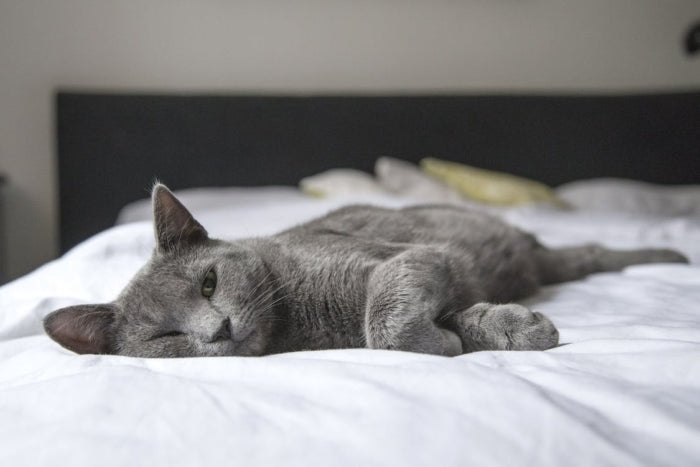Fleas on cats can be a nightmare for owners. These tiny parasites cause itching, skin irritation, anemia, and even tapeworms. Because cats are especially sensitive to chemicals, it's crucial to choose safe flea treatments. In this guide, you'll learn how to recognize fleas, understand their life cycle, and discover the safest natural ways to keep your cat healthy and flea-free.
Why Cat Flea Control Matters
Left untreated, fleas can multiply rapidly, spreading through your home and creating serious health issues for your cat. The sooner you identify and treat fleas safely, the easier it is to protect your feline friend.
What Do Fleas Look Like?

Fleas are tiny, brownish-black insects, about the size of a grain of sand. When they feed, their bodies swell and darken. If you notice black specks, often called flea dirt, in your cat's coat, it's usually a clear sign of infestation.

Why Do Cats Get Fleas?
Cats pick up fleas in a variety of ways. Contact with other infected animals—such as dogs, strays, or wildlife—is one of the most common causes. Flea eggs also lurk in carpets, bedding, and furniture, where they wait to hatch and jump onto your cat. In some cases, humans can even carry fleas or their eggs indoors on clothing and shoes, unknowingly transferring them to pets.
The Life Cycle of a Flea
Fleas develop in four stages: egg, larva, pupa, and adult. Adult fleas can lay up to 50 eggs each day, which then drop into your home and quickly multiply. Breaking this cycle is essential, because unless every stage is addressed, the infestation continues. Treatments that target both adult fleas and immature stages work best, as they interrupt the development of new fleas before they can mature.
Symptoms of Fleas on Cats
A cat with fleas often scratches and licks excessively. You may notice hair loss, irritated skin, or small scabs. Flea dirt in the fur is another giveaway. In severe cases, the blood loss from constant bites can lead to anemia, which makes cats weak and lethargic.
Safe & Natural Flea Treatments for Cats
There are several safe ways to treat fleas in cats. Using a flea comb is one of the simplest methods, as it removes adult fleas and flea dirt from the coat. Sprays can be effective as well, but it is vital to use formulas that are specifically labeled safe for cats, since many sprays made for dogs contain ingredients that are toxic to felines.
Some owners turn to vet-approved topical treatments or collars, which are easy to apply and can provide long-term protection. Herbal remedies such as brewer's yeast or rosemary are also used, although results vary and they may not be strong enough for established infestations. Gentle home remedies like regular brushing or an oatmeal bath can also help soothe a cat's irritated skin while reducing flea numbers.
Preventing Fleas on Cats
Prevention is the safest way to protect your cat long-term. Natural, plant-based repellents are effective without exposing pets to pesticides. PawPurity® Flea & Tick Shampoo for Cats combines aloe vera, rosemary, ginger, lemongrass, and cedarwood oils to repel pests while nourishing the skin and coat. Our Flea & Tick Spray is another gentle, plant-based solution. Although it was designed for dogs, it is completely safe for cats and can be used before they go outdoors. Neither product contains pesticides or harsh chemicals, making them safe for kittens as well as adult cats.
Getting Rid of Fleas in Your Home
It isn't enough to treat only the cat. Fleas also thrive in the home, so regular cleaning is essential. Vacuuming carpets and furniture frequently, washing bedding in hot water, and cleaning your cat's favorite resting places all help eliminate eggs and larvae before they mature. This reduces the chance of reinfestation and supports the effectiveness of your cat's flea treatment.
Ensure Comfort for Your Furbaby
Fleas can make life miserable for cats, but safe and natural treatments provide an effective solution. By choosing gentle remedies, using products formulated specifically for cats, and keeping your home clean, you can break the flea cycle without harsh chemicals. Prevention is key, and with regular care, you can keep your feline friend comfortable, healthy, and flea-free.
Explore the PawPurity® Flea & Tick Collection to see safe, natural solutions designed specifically for cats. For complete protection, check out our Cat Flea & Tick Defense Kit with both shampoo and spray.



